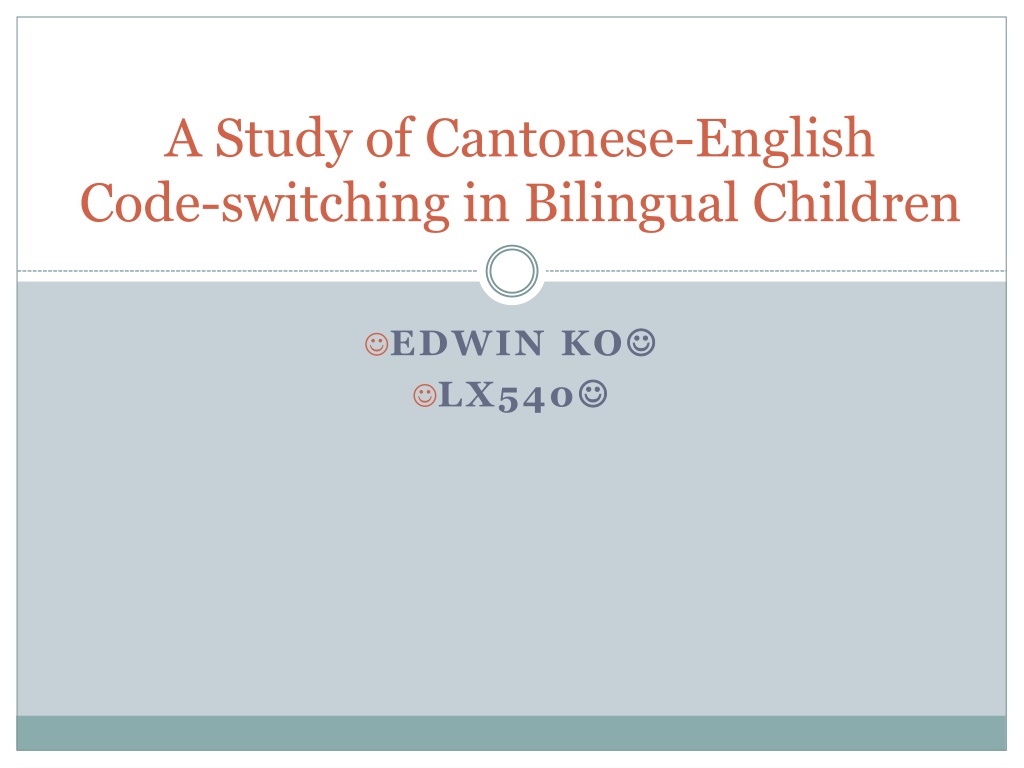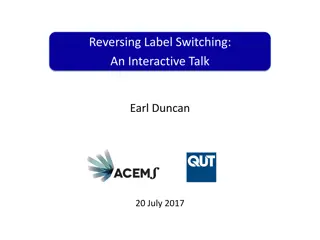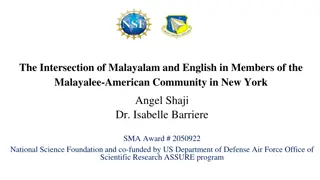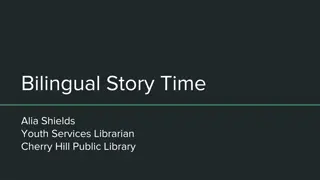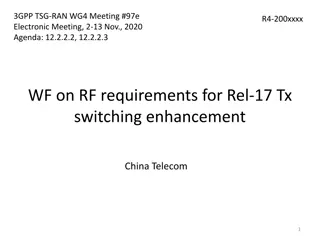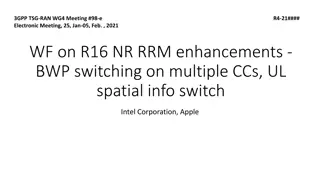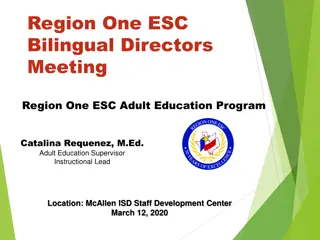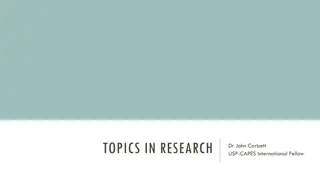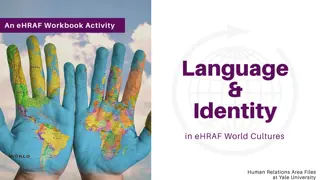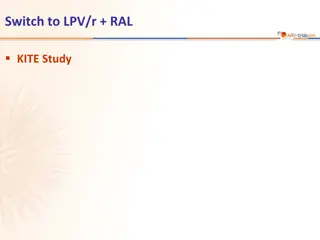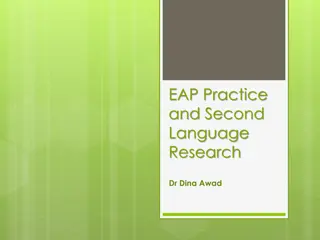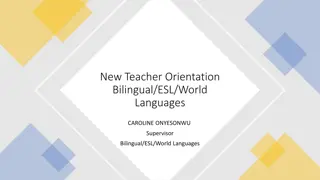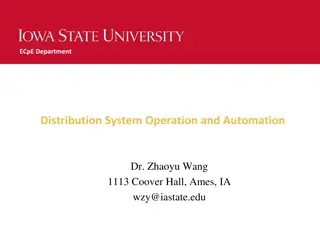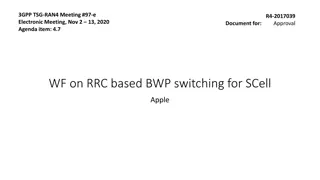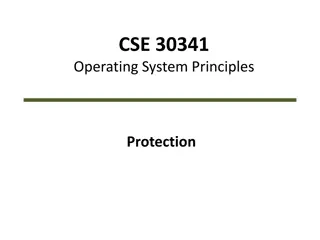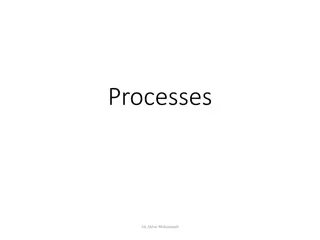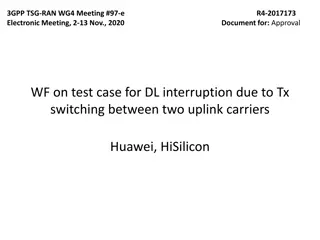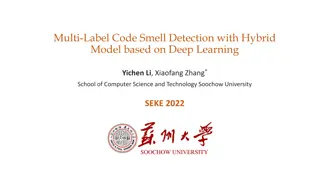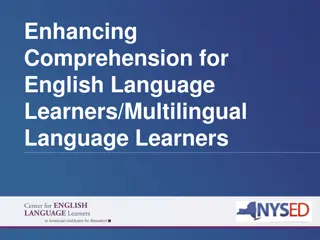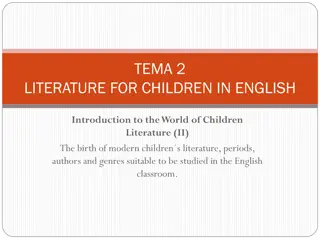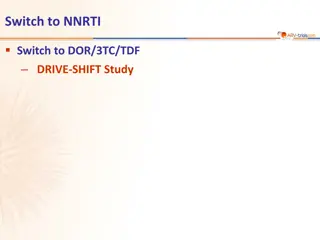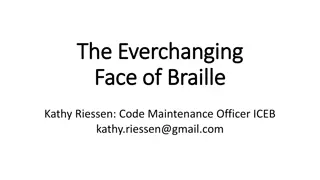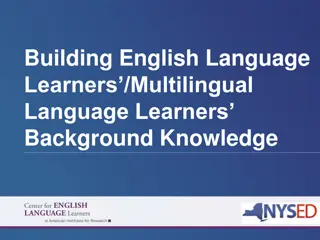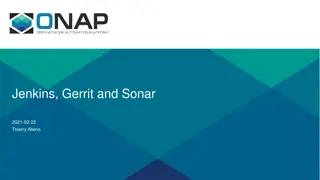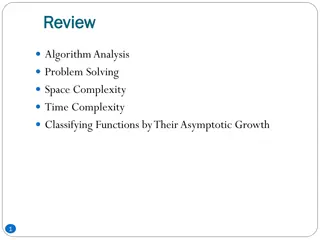Study of Cantonese-English Code-switching in Bilingual Children
This study explores Cantonese-English code-switching in bilingual children, examining lexical, syntactic, and discourse differences between the languages. Research findings suggest a significant influence of Cantonese on English development in early bilingualism, with implications for language dominance. Data from CHILDES database and analysis of speech transcripts provide insights into language transfer and proficiency levels in Cantonese and English.
Download Presentation

Please find below an Image/Link to download the presentation.
The content on the website is provided AS IS for your information and personal use only. It may not be sold, licensed, or shared on other websites without obtaining consent from the author. Download presentation by click this link. If you encounter any issues during the download, it is possible that the publisher has removed the file from their server.
E N D
Presentation Transcript
A Study of Cantonese-English Code-switching in Bilingual Children EDWIN KO LX540
Luke (1998) English lexical items typically follow Cantonese prosody and differ phonetically. project present. Ngo5 jau5 go3 pro1ject4 jiu3 pre6sent1 (lit. I have CL-project need present) I have a project I need to present. English lexical items are typically inserted into Cantonese syntactic frames. happy di1 happy + comparative marker happier pro m5 produce dou2 can (it) be produced English lexical items tend to have their range of meanings restricted to one specific meaning, or another meaning altogether. tissue is widely used to refer only to soft paper in a packet. board is widely used among civil servants to mean board meeting There is a significant absence of discourse markers. E.g. and, but, after all, and then, etc.
Yip and Matthews (2000) Syntactic transfer in a Cantonese-English bilingual child Wh-in-situ interrogatives (1) What did you eat? (2) Lei5 sik6 zo2 mat1je5? (2) You eat-PFV what? Null objects (5) A: Gin6 saam1 hou2 leng3 wo3. CL blouse very pretty PRT That's a nice blouse. B: Ngo5 zung1ji3 aa3. I like PRT I like (it). Prenominal relatives [[Ngo5 sik1 _s] go2 di1 jan4 NP] zau2 saai3. I know those CL people leave all The people I know have all left. English shows substantial influence of Cantonese in the early development of a Cantonese-dominant bilingual. MLUw for Cantonese was higher indicating dominance over English during the observed period.
Methodology CHILDES Database CHILDES/ EastAsian/ Cantonese/ The children were being instructed English and the majority of the data could not be used. CHILDES/ Biling/ YipMatthews/ Omissions: Repetition of an immediate preceding utterance Names Auntie , (Brother), Mickey Mouse ( ) English words that have been lexicalized in Cantonese. Hello, OK, Bye bye, etc. Rote-learned expression Twinkle twinkle little star Chinese exclamative particles Bear bear (Bear bear!/It s bear bear! - context) Exception: so many (Oh, wow! So many!)
Subjects Collected data from five subjects on the CHILDES database. All subjects are Cantonese L1 and English L2 speakers. Spontaneous speech data were obtained at the subjects home. Subject #1 Alicia/female 1;3 3;0 40 transcripts 20/20 early/late Subject #2 Charlotte/female 1;8 3;0 19 transcripts 9/9 early/late, the 10thtranscript is omitted
Results Subject #1 3.100 2.900 2.700 2.500 MLUw 2.300 2.100 1.900 1.700 1.500 Early Transcripts 1.692 2.047 Late Transcripts 2.307 2.879 English Cantonese
Results (cont.) Subject #2 2.9 2.7 2.5 MLUw 2.3 2.1 1.9 1.7 1.5 Early Transcripts 1.919 1.925 Late Transcripts 2.743 2.309 English Cantonese
Results (cont.) 100% 90% 80% 70% 60% Incorrect Correct 50% 40% 30% 20% 10% 0% Subj. #1 Early Subj. #1 Late Subj. #2 Early Subj. #2 Late
Analysis Wh-in-situ interrogatives * what? nei1 dou6 ne1 go3 what ? what ne1 go3? Lit. here this-CL what? Lit. what this-CL? Null objects open . ngo5 open. ngo5 soeng2 daai3 it. Lit. I open I open (it). Lit. I want bring it. Prenominal relatives too dark . siu2 pang4 jau5 too dark go2 go3 aa3 . Lit. small friend too dark that-CL PRT The child who is too dark is that one! *what ?. * it.
Analysis (cont.) Classifiers * garden . ngo5 dei6 gam3 jat1 garden gam2 joeng2. Lit. I-PL so one garden like this Negation *not not wu1 zou1 aa3. nei5 no no wai2 aa3 Lit. not dirty PRT Lit. you no Lit. no space! L1 Transfer *I want . I want cung1 loeng4. Lit. I want shower(verb) Attrition /L2 Transfer (?) * dog . ngo5 soeng2 dog aa3. Lit. I want dog PRT * no *no
References Luke, K.K. (1998) Why two languages might be better than one: Motivations of language mixing in Hong Kong. In Pennington, M. (ed.) Language in Hong Kong at Century s End, pp.145-159. Hong Kong: Hong Kong University Press. Chan, B. (1998). How does Cantonese-English code-mixing work? In Pennington, M. (ed.) Language in Hong Kong at Century s End, pp.191-216. Hong Kong: Hong Kong University Press. Matthews, S. and Yip, V. (1994) Cantonese: A Comprehensive Grammar. London and New York: Routledge. Matthews, S. and Yip, V. (2000) Syntactic transfer in a Cantonese-English bilingual child. Bilingualism: Language and Cognition 3.3.193-208. Cambridge University Press.
